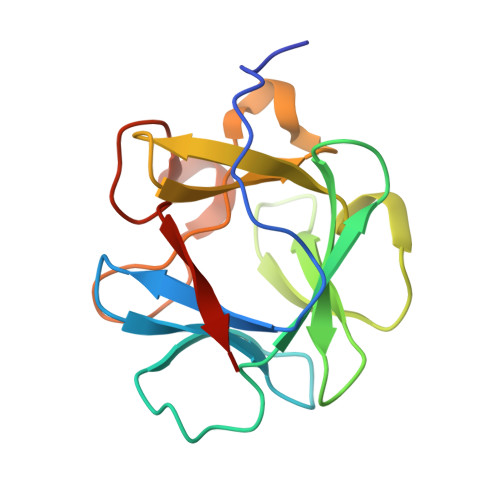The interaction between thermodynamic stability and buried free cysteines in regulating the functional half-life of fibroblast growth factor-1.
Lee, J., Blaber, M.(2009) J Mol Biol 393: 113-127
- PubMed: 19695265
- DOI: https://doi.org/10.1016/j.jmb.2009.08.026
- Primary Citation of Related Structures:
3FGM, 3FJ8, 3FJ9, 3FJA, 3FJB, 3FJC, 3FJD - PubMed Abstract:
Protein biopharmaceuticals are an important and growing area of human therapeutics; however, the intrinsic property of proteins to adopt alternative conformations (such as during protein unfolding and aggregation) presents numerous challenges, limiting their effective application as biopharmaceuticals. Using fibroblast growth factor-1 as model system, we describe a cooperative interaction between the intrinsic property of thermostability and the reactivity of buried free-cysteine residues that can substantially modulate protein functional half-life. A mutational strategy that combines elimination of buried free cysteines and secondary mutations that enhance thermostability to achieve a substantial gain in functional half-life is described. Furthermore, the implementation of this design strategy utilizing stabilizing mutations within the core region resulted in a mutant protein that is essentially indistinguishable from wild type as regard protein surface and solvent structure, thus minimizing the immunogenic potential of the mutations. This design strategy should be generally applicable to soluble globular proteins containing buried free-cysteine residues.
Organizational Affiliation:
Department of Biomedical Sciences, College of Medicine, Florida State University, Tallahassee, FL 32306-4300, USA.
















